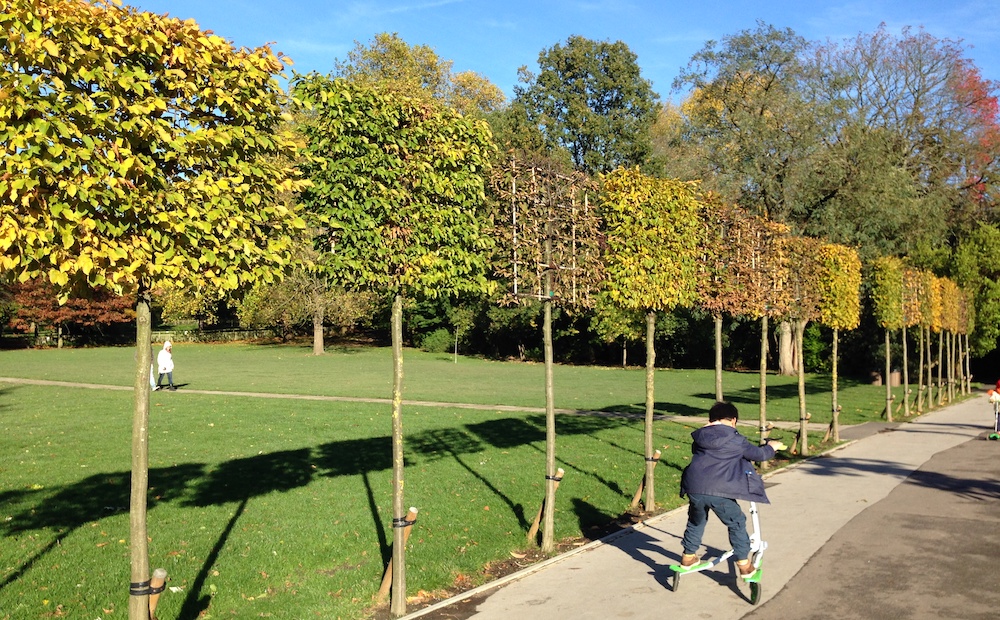Espalier Chic
Espalier (/ᵻˈspælɪər/ or /ᵻˈspæli.eɪ/) is the horticultural and ancient agricultural practice of controlling woody plant growth for the production of fruit, by pruning and tying branches to a frame. Plants are frequently shaped in formal patterns, flat against a structure such as a wall, fence, or trellis, and also plants which have been shaped in this way.
Espaliers, trained into flat two-dimensional forms, are used not only for decorative purposes, but also for gardens in which space is limited. In a temperate climate, espaliers may be trained next to a wall that can reflect more sunlight and retain heat overnight or orientated so that they absorb maximum sunlight by training them parallel to the equator. These two strategies allow the season to be extended so that fruit has more time to mature.
Espalier as a technique seems to have started with the ancient Romans. In the Middle Ages the Europeans refined it into an art. The practice was popularly used in Europe to produce fruit inside the walls of a typical castle courtyard without interfering with the open space and to decorate solid walls by planting flattened trees near them. Vineyards have used the technique in the training of grapes for hundreds or perhaps even thousands of years.

